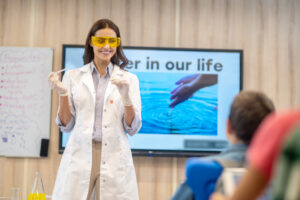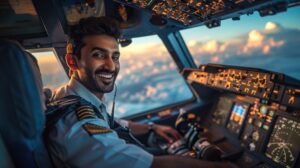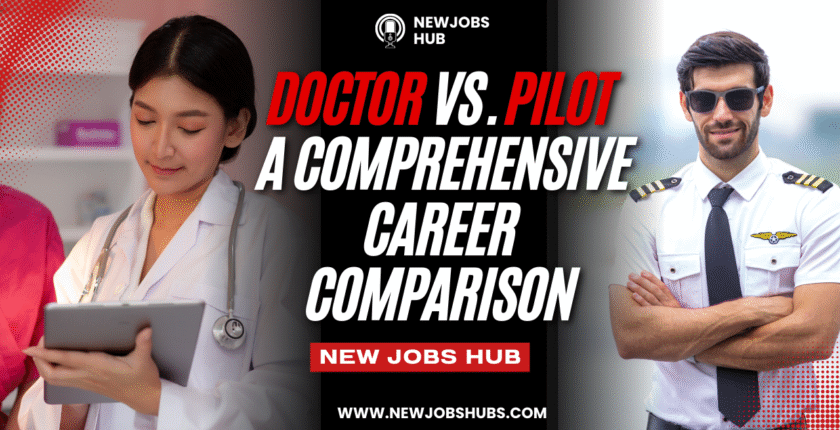Doctor vs. Pilot: A Comprehensive Career Comparison
Introduction
From past history, many people have always landed in two fields of life when making a career. Both being either a doctor or a pilot, of course, they are covering medicine and aviation industries. Being a doctor or a pilot are respected worldwide since they are both prestigious and challenging. Education, discipline, commitment, and years are essential to becoming either of them. Despite being professionals, their careers are challenging, their roles, responsibilities, and lifestyle are extremely different. Doctors lifetime is dedicated to improving the well-being of the individual. Meanwhile, pilots are responsible for delivering passengers and cargo to different locations throughout the world. It is necessary to define the role of a doctor and a pilot, determine their day-to-day work, and thoroughly compare both careers in order to provide accurate information. The scope of work, requirements to education, environmental, and personal impacts of the two professions, as well as some of the beneficial aspects, will be evaluated in the essay.
Role and Responsibilities
Doctor
Doctor is a medical and health professional whose responsibility is to enhance and protect the well-being of people. The daily responsibility of a doctor is diagnosing diseases, prescribing medical treatment, performing medical procedures, and preventive care. The work of doctors depends entirely on the doctor’s specialty, whether it is a surgeon, pediatrician, cardiologist, psychiatrist, and others. Doctors have to be updated on their professional level and all modern technologies and capabilities. They have to keep patients’ records and provide them with a safe and excellent performance. Besides the technical side, doctors always have to provide an emotional side to the patients, they educate people and make rushed decisions when it comes to patients’ well-being.
Pilot
A pilot is a person responsible for operating an aircraft and ensuring safe and efficient passenger or goods transportation. To do so, pilots must be skilled in navigation, able to interpret meteorological data, and in constant communication with air traffic controllers. Among their many responsibilities are conducting pre-flight checks, monitoring the weather, plotting flight paths, and responding to any unexpected in-flight situations. There are different types of pilots, including commercial airline pilots, cargo pilots, military pilots, and private jet pilots. Although modern aircraft are heavily automated, the pilot’s abilities, especially in cases of emergency or challenging weather conditions, remain essential.
Educational path
Becoming a doctor
To begin a career as a doctor, one must commit to a long and academically challenging education. For that purpose, a would-be doctor need to:
- complete a bachelor’s degree, typically in pre-med or biology;
- complete a 4–6-year program in medical school, depending on the exact country;
- pass the necessary licencing exams, for instance, USMLE in the United States or PLAB in the United Kingdom;
- complete a 3–7 years long residency program, depending on the specialization;
- optional further train in subspecialties, often in the form of shorter fellowships.
- By this point, most graduates would be in their late 20s or early 30s. Throughout these studies, medical students must combine theoretical knowledge and abilities in patient care.

Becoming a pilot
A career as a pilot typically involves less time commitment but still requires significant training:
- acquiring a basic general education qualification, typically a high school diploma or its equivalent, although some airlines prefer their candidates to hold a bachelor’s degree in aviation or related fields;
- enrolling in a flight school or an aviation academy;
- starting license as a Pilot License License ;
- later licenses include a Commercial Pilot License , and if necessary, an Airline Transport Pilot License;
- reaching the necessary number of flight hours, usually over 1,500 in case of international airlines;
- regular medical examinations to ensure the physical ability to fly.
While training is shorter than for medicine, pilots have to regularly complete recurrent training and testing for the rest of their career.

Work Environment
Doctors
They work in hospitals, clinics, private practices, research institutions, or public health organizations. Much of their work is in fast-paced, high-pressure environments, particularly in emergencies or the operating room. Doctors may spend their days in quiet consultation rooms or busy operating theatres, depending on their specialty. The work performed by these individuals consists of extensive hours, overnight shifts, and readiness for emergency arrivals. It requires good physical condition, mental endurance and instant decision making when it matters the most.
Pilots
Actual in-cockpit time: Most pilots spend a large part of their working life away from the aircraft anyway, communicating with airline management, ground crew, and potential passengers, while the co-pilot would be dead-time during any other flight: They collaborate with flight attendants, ground, and air traffic crew. The cockpit is an advanced technological marvel, which can Sim City the absolute hell out of your attention span. Due to layovers, they also have to stay in different cities or even countries for great periods away from home. They are often on duty for night, weekends and holidays and receive substantial jet lag if they are scheduled for international flights.
Skills Required
Doctors
Doctors need:
- Strong analytical and problem-solving skills.
- Good communication and empathy to communicate with patients.
- Precision and attention to detail.
- Work well under extreme pressure.
- They practice “lifelong learning” to keep up with new medical breakthroughs.
- Pilots
Pilots require:
- Good knowledge of hand-eye coordination and space
- Quick decision-making abilities.
- Technical knowledge of aircraft systems.
- Effective communication with crew and/or air traffic control
- Ability to stay cool in the face of pressure, particularly during emergencies.
Challenges of Each Profession
Challenges for Doctors
- Long and expensive education.
- High-stress situations with life-or-death decisions.
- Emotional toll from patient outcomes.
- Long hours → Burnout Risk
- Consistent requirement for skill and knowledge upgradation.
Challenges for Pilots
- A physical toll of disrupted routines and jet lag
- Responsibility for passenger safety.
- Maintaining strict medical fitness standards.
- Dealing with unpredictable weather and technical problems
- Prolonged time away from family.
Financial Aspects
Doctors
The average salary of a doctor varies according to its specialty, experience and also a location. For example, surgeons, anesthesiologists, and cardiologists earn much more than general practitioners, but that is no longer the norm. Starting salaries can be low, but they usually progress naturally as experience is gained. Doctors in numerous countries are also provided with supplementary privileges in terms of financial gains, including but not limited to pensions, bonuses, and health insurance.
Pilots
Career.#6 – Pilots, especially for large airlines, salaries can be quite high. Exact earnings vary by experience, aircraft type and size of the airline. ATC senior captains frequently break into six-figure territory and enjoy the spoils that accompany many such senior roles, including free rides, per diem allowances to offset layover meals and lodgings, and retirement benefits. Despite a history of good returns, income can be impacted through economic woes, airlines restructuring or if demand for air travel changes.
Work-Life Balance
Doctors
It can be difficult to manage your life amid your profession, particularly during the steep learning curve of training and early practice. Family and social life is often disrupted by shift work, on-call duties, and emergencies. Other doctors—particularly those in their own practice—may exert greater control over their time later in their careers.
Pilots
In many ways the pilots have more predictable schedules once they gain seniority, but their schedules can also keep them away from home for multiple days at a time. This may have a negative impact on family life, however, a layover in another place is also an opportunity to travel and relax. To keep the tired pilots away from long-haul flights, the airlines generally give them rest days after each flight.
Social Impact and Public Perception
Doctors
Many people look to doctors as lifesavers and community leaders. Their work changes not only the individuals, but the public health of nations. In most cultures, for centuries, there has been an aura of prestige, trust and respect around the title of a doctor.
Pilots
Pilots are respected for their competence, professionalism, and responsibility. To a considerable extent, they represent adventure, technology, and the allure of airplanes. Passengers rely on pilots to an enormous extent, especially under conditions of limited visibility, adverse weather, and other difficulties.
Job Security and Future Prospects
Doctors
People always get sick; therefore, doctors will always have relatively good job security. The growing aging population and technological advances will also keep on pushing the demand for medical professionals. Although some new technologies and AI can now diagnose some diseases with even more accuracy cost-effectively, we still cannot rely on a machine to make the final judgment. Moreover, in a predominantly female world, many women will always appreciate men doctors.
Pilots
The aviation industry is commercial, hence very sensitive to business cycles, even the earliest pandemics, acts of terrorism, and wars. Although money and diplomacy have to some extent reshaped the shaky operating environment, many factors present a risk. Technology and machine learning, can have some effect in the predictions and other phases, but for some long time, piloting is limited. Therefore, probably pilots will always be around considering responding to unexpected situations and emergencies that are hard to predict.
Choosing Between the Two Jobs
It is very complicated to determine whether one should become a doctor or a pilot. Specialists obsessed with natural sciences, biology, and in love with helping people overcome their illnesses should be happy with their choice. Highly relational people who care for technology, traveling, and operating various types of machines will enjoy their lives in an airplane. Both professions will always request the major features, namely competence, responsibility, and permanent learning of new knowledge, but the lifestyle and rewards will differ.
Conclusion
Healthcare professionals and pilots→ these are professions that society needs, medicine takes care of our lives, and flying connects the world. Despite their different roles, both professions require commitment, resilience, and a degree of excellence. However, pursuing a career in medicine means spending more years in school, but fosters deep relationships with patients and provides a stable job position. If you want to experience the excitement of flight, travel the world, and get paid very well for it, becoming a pilot is the ticket — with the caveat that you will spend long-hours away from home. At the end of the day, the decision between these two careers should not be dictated by prestige or salary but passion, inclination and lifestyle you want to live.

